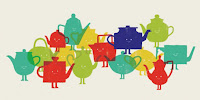 Human perception is a result of interplays between past experiences, including one’s culture, and the interpretation of the perceived.
Human perception is a result of interplays between past experiences, including one’s culture, and the interpretation of the perceived.Two types of consciousness are considerable regarding perception: phenomenal (any occurrence that is observable) and psychological (not related to the external world).
Jay Wright Forrester defined mental model as: "The image of the world around us, which carry in our head, is just a model. Nobody in his head imagin all over the world, government or country. He has only selected concepts and relationships between them and those used to represent the real system".
Two mythological beings
Condillac conceived a marble statue in the likeness of the human body and inhabited by a soul that had never perceived or thought. He begins by conferring on his statue a single sense, perhaps the least complex of all-that of smell. A whiff of jasmine is the start of the statue's biography; for one moment there is nothing but this odor in the whole universe-or, to be more accurate, this odor is the universe, which a moment later will be the odor of a rose, then of a carnation.
In the statue's consciousness, once there is a single odor we have attention; once an odor lasts after the stimulus has ceased we have memory; once a present and a past impression occupy the statue's attention we have the ability to compare once the statue perceives likeness and unlikeness we have judgment; once the ability to compare and judgment occur a second time we have reflection; once a pleasant memory is more vivid than an unpleasant impression we have imagination. Once the faculty of understanding is born, the faculty of the will will be born: love and hate (attraction and repulsion), hope and fear. The consciousness of having passed through many states of mind will give the statue the abstract notion of numbers; the consciousness of being the odor of carnation and of having been the odor of jasmine, the notion of the I.
The author will then endow his hypothetical man with hearing, taste, sight, and finally, touch. This last sense will reveal to him that space exists and that in space he exists in a body; sounds, smells, and colors had been to him, before this stage, mere variations or modifications of his consciousness.
The other creature raised by the problem of consciousness is the "hypothetical animal" of Lotze. This being has in its skin but one movable sensitive point-at the extremity of an antenna. Its structure denies it, as is obvious, more than one perception at a time. Lotze argues that the ability to retract or extend its sensitive antenna will enable this all but the animal to discover the external world and distinguish a stationary from a moving object.
I wonder what would be the main differences between the 3 mental models: the human one, the Lotze hypotetical animal one and the Candillac statue one?







